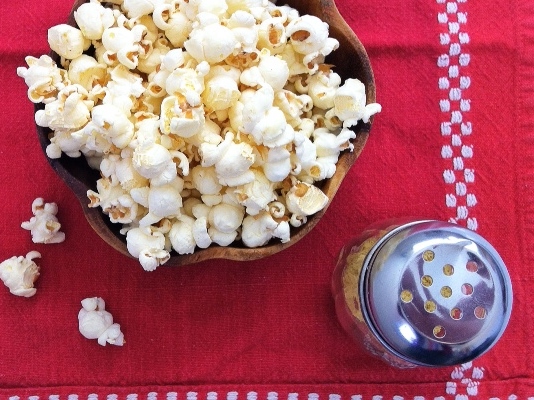What’s Up With That Food: Nutritional Yeast
In which we uncover the background of foods you've always wondered about
Food FeaturesNutritional yeast has such a serious sounding name, and that’s because it’s chockablock with some serious nutritional power. But it’s also mysterious. What do I do with it? How do I eat it? Can I bake with it? And where does it come from? We answered as many of these questions as possible, but some, such as its origins, remain elusive.
Type of food: Supplement? Condiment? Ingredient? All three.
Nicknames: “Nooch,” “hippie dust” or “yeshi”
Origins: Nutritional yeast is made from a single-celled organism called Saccharomyces Cerevisiae. It’s grown on molasses then harvested, washed and heat-dried, which deactivates it.
Why/how did we start eating it: Nutritional yeast is nothing new—it dates back to the Egyptians.
How it’s used: The common gateway experience with nutritional yeast is to toss it with popcorn; the next logical move is to sprinkle it over kale chips. Vegans often add it to foods where cheese would normally be, such as sprinkled on top of pasta, veggies, or mixed in with a nondairy milk for a “cream” sauce. Rene Ficek, the lead nutrition expert at Seattle Sutton’s Healthy Eating, says it’s also useful “stirred into mashed potatoes or added to the cooking water when making grits or polenta. Chefs love it for its umami flavor.”

How it’s purchased: You might see it in flakes or in powder. You might find it in plastic and glass jars and containers, as well as in bulk. Like spices, which can degrade over time and lose potency, nutritional yeast is best stored in an airtight container. “Use a glass jar, a sealed plastic container with a lid, or a sturdy freezer bag with a zip closure to ensure freshness,” says Ficek.
Sensory experience: These small yellowish-brown flakes are known for imparting nutty, cheesy, umami taste. Nutritional yeast definitely brings a savory hit to dishes.
Nutrition and other benefits: Nutritional yeast is often a go-to food for those following a vegetarian and vegan diet because of the aforementioned uses, but also because nutritional yeast contains a high level of B vitamins. According to Joshua Rosenthal, founder and director of the Institute for Integrative Nutrition, most contain fortified B12; this nutrient does not occur naturally in the yeast, nor is it available from non-animal sources. “Just two tablespoons of this stuff has about 9 grams of complete protein, meaning all nine amino acids the body needs,” says Rosenthal. That same serving size offers 4-5 grams of fiber, along with some folic acid, selenium and zinc. It has no sugar, cholesterol or sodium.
Word to the Wise: You can’t use this as you would use other sorts of yeasts—it’s not going to bubble and froth like baker’s yeast. It’s typically a gluten-free product, but look for brands that certify it is so.
Nutritional yeast if not the same thing as brewer’s yeast, which is another deactivated yeast often used as a supplement. It looks similar to nutritional yeast and offers many of the same nutrients, but its flavor is bitter, so brewer’s yeast not typically used in cooking.
Some anecdotal evidence (including from this author) suggests that nutritional yeast may not suit everyone equally. “Nutritional yeast might cause stomachaches and indigestion because it’s very processed. Every person is different; some will thrive on it while others will feel bad. That’s bio-individuality—my concept that no two people will thrive on the same exact food or lifestyle,” says Rosenthal.
Carrie Havranek is a recovering music critic and part-time baker who writes about food, farmers’ markets, chefs and restaurants—and sometimes travel—from her home in Easton, Pennsylvania. You may have seen her work elsewhere in Edible Philly, the Kitchn, or Frommer’s.